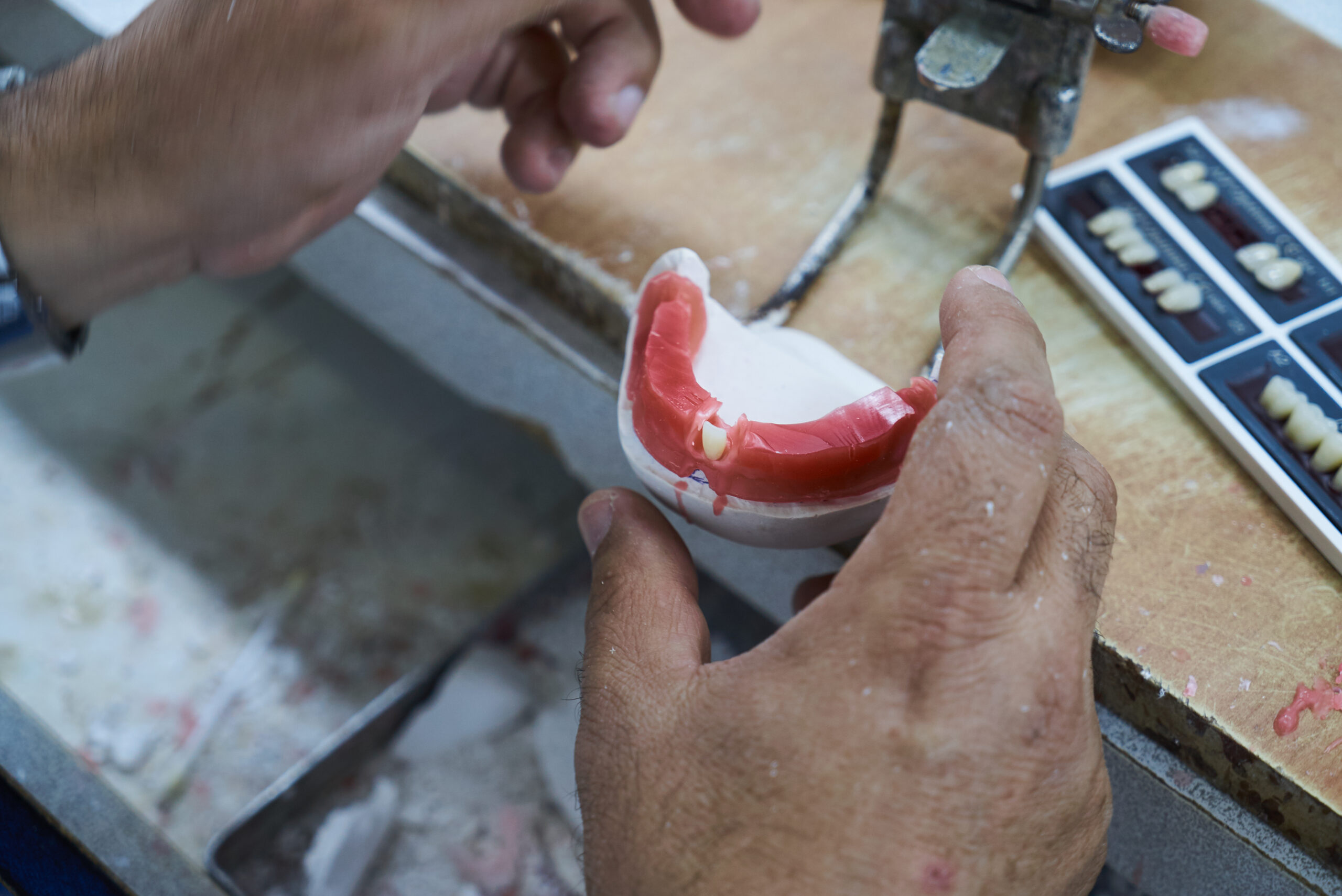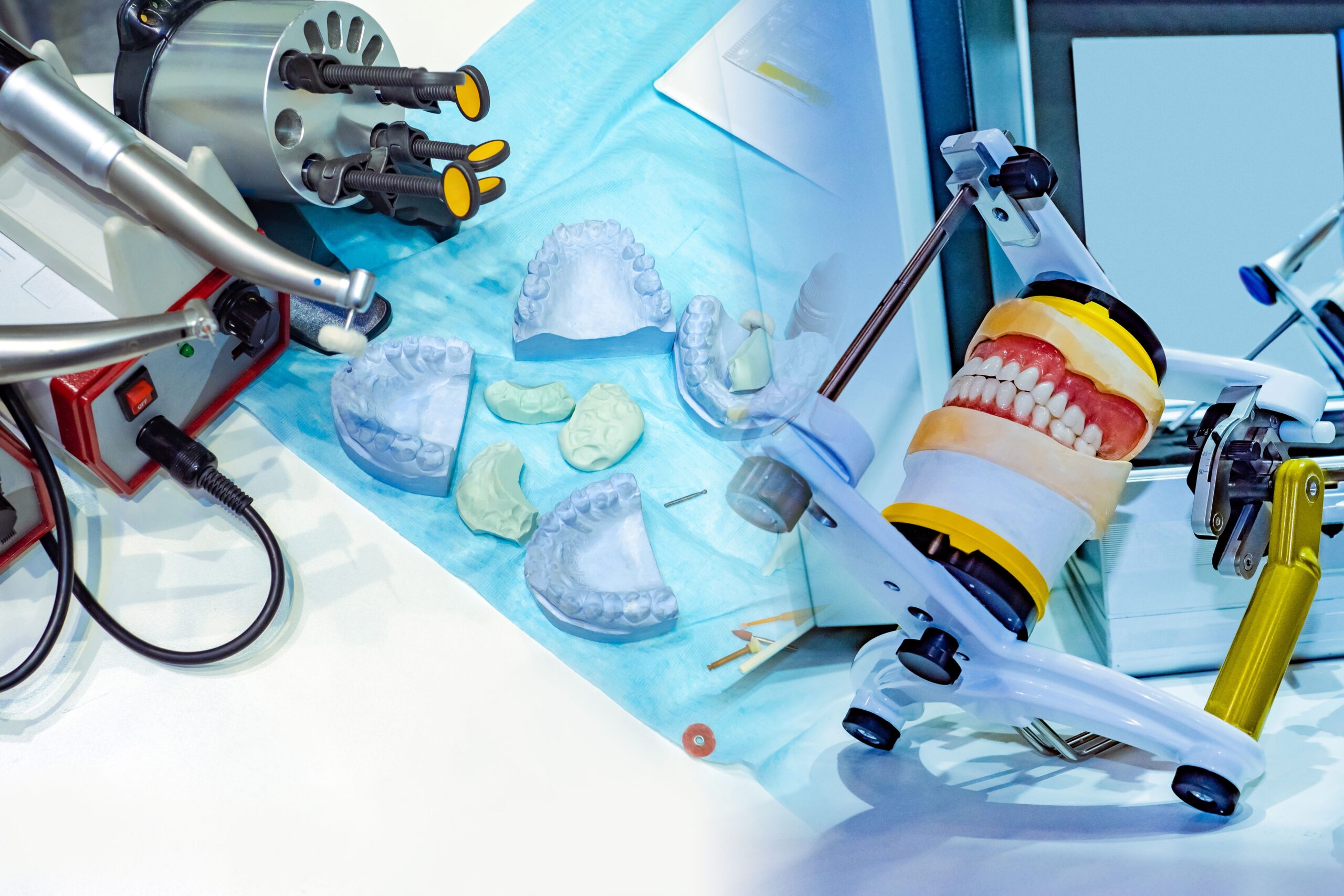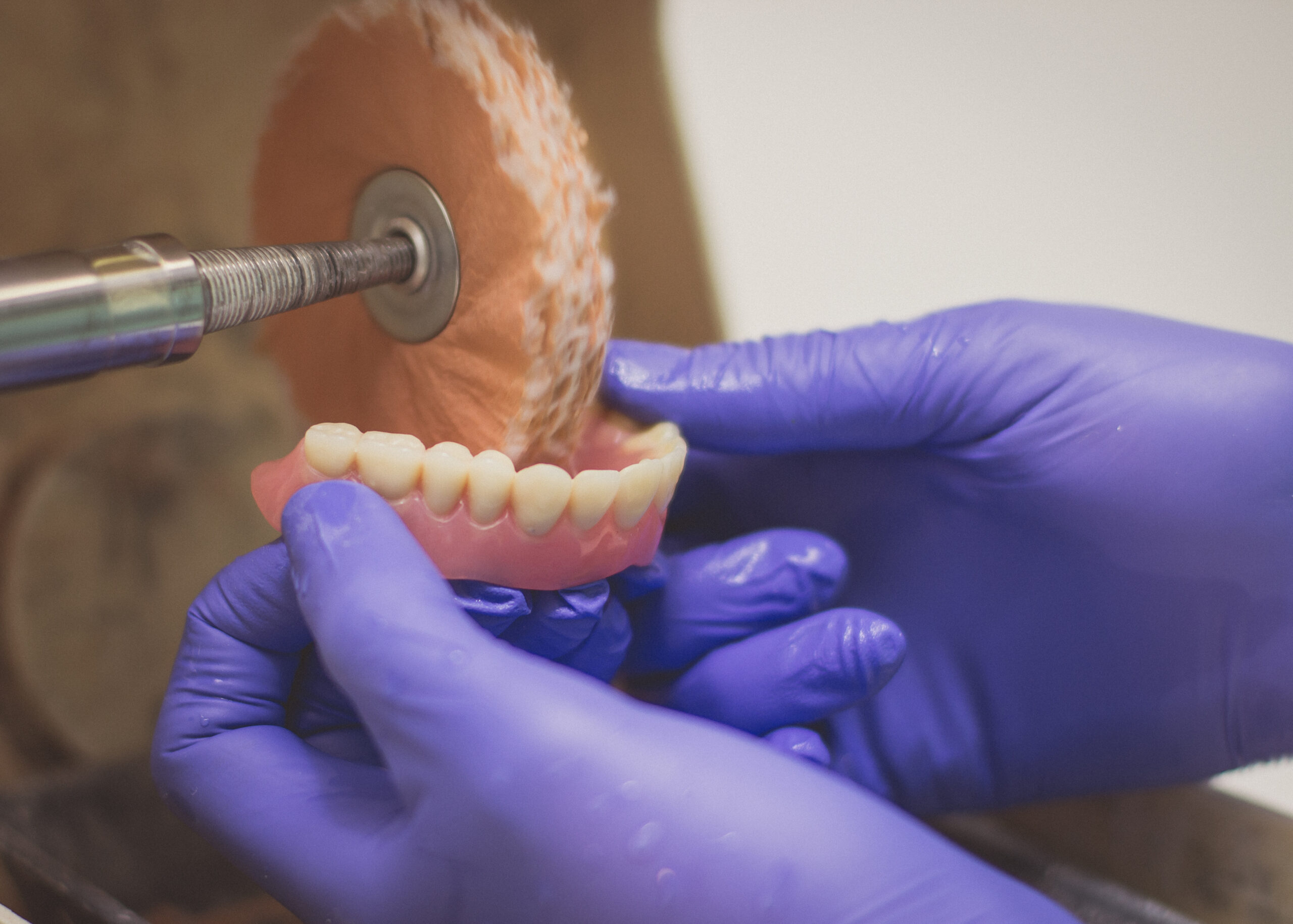What Is The Process Involved In Making A Denture?
Each denture is tailor-made for the individual and is constructed over several different steps. These steps are the basic universal ones. Cast metal frameworks and thermoplastic dentures required additional procedures involving specialised equipment. For those of you who love dry technical detail you are welcome!
Step 1: Impressions and model making
At the first appointment we will take an impression of your mouth and from these create plaster moulds which replicate your mouth exactly.
Step 2: A wax model is shaped and articulated
Using the plaster moulds as the guide, we then carve and shape a wax bite rim which looks like your gums, fits accurately and is natural looking. This wax base will also be used to position the selected teeth. To check how the teeth come together this wax denture will then be put in a mechanical device used to represent the jaw known as an articulator.
Step 3: Try-in stage
This is a very important appointment where you will get to try the denture in while it is still in wax and changes can easily be made. With your input, we will carefully check the appearance and position of the teeth, fit of the base, lip and cheek support and accuracy of the bite plane to make sure everything is in the right configuration before the denture is made up in the final acrylic.
Step 4: Set dentures in a flask
Once the denture has been tried in and you are happy with how it fits and looks the denture moves towards the finishing stages. Firstly, the dentures are placed in a flask, which is a holding device into which more plaster is poured, so the shape of the dentures can be maintained. The flask is then placed in hot water and the wax is melted off.
Step 5: Inject acrylic into the plaster mould
Once the wax has been removed, a liquid separator is painted onto the plaster before acrylic is injected into the flask to replace the removed wax denture.
Step 6: The plaster is removed
After processing the flask at high temperatures so that the acrylic cures, the plaster mould is carefully removed using special lab tools leaving just the fledgling new denture. The dentures are then placed in an ultrasonic bath with specific stone and plaster remover liquid to remove any remaining plaster.
Step 7: The denture is finally trimmed and polished
Any excess acrylic from the dentures will be cut from the denture. After trimming, pumice and a polishing wheel are used to smooth and shine it.
Step 8: Dentures are ready.
Now your dentures are ready to be fitted! This all takes about 3 weeks and is done over 3-4 different appointments.
However, there is one more crucial step…….
Step 9: Rehabilitation
As mentioned a few times on our website, dentures are a false body part, and your cheeks, lips and gums will all have to adjust to the feel and fit of your new dentures. Getting a new denture is not like buying a new pair of socks. Eating, swallowing and speaking are complex movements and it is impossible to predict what issues may arise until you are actually using them in your day-to-day life. As we say to all our clients – the dentures are not truly finished the day we fit them. Follow up appointments are essential to fine tune the fit and function or alleviate any sore spots.
This is completely normal so don’t worry!
Digital Dentures: The Next Generation of Dentures
As with most things in this modern world, the technological realm has become involved in the denture making process.
The use of CAD/CAM in digital dentistry remains an exciting topic with tremendous growth potential. Exponents of this method (mostly the companies who sell the 3D printing software and printers!) will claim that digitally produced dentures are quicker to make and fit better. However, there are many challenges as well.
The success of the digital process lies on getting a good first impression of the mouth, done the traditional way or with an oral scanner, so the skill and experience of the dental prosthetist is paramount. There are many things that can adversely impact the quality of this critical stage that are hard to counter when using digital methods.
How well bite measurements, teeth selection, teeth position, jaw relationships and other significant data are entered into the digital software obviously determines the outcome. If mistakes have not been picked up digital dentures can be extremely difficult to modify once finished.
There is no doubt that over the next 5- 10 years digital dentistry will become the norm and the current shortfalls in the process will have been worked out. In the meantime, extremely experienced dental prosthetists like Dentures Direct Ballina (45 years in the profession!) still prefer doing things manually using their decades of technical skill and aesthetic sensibility.








